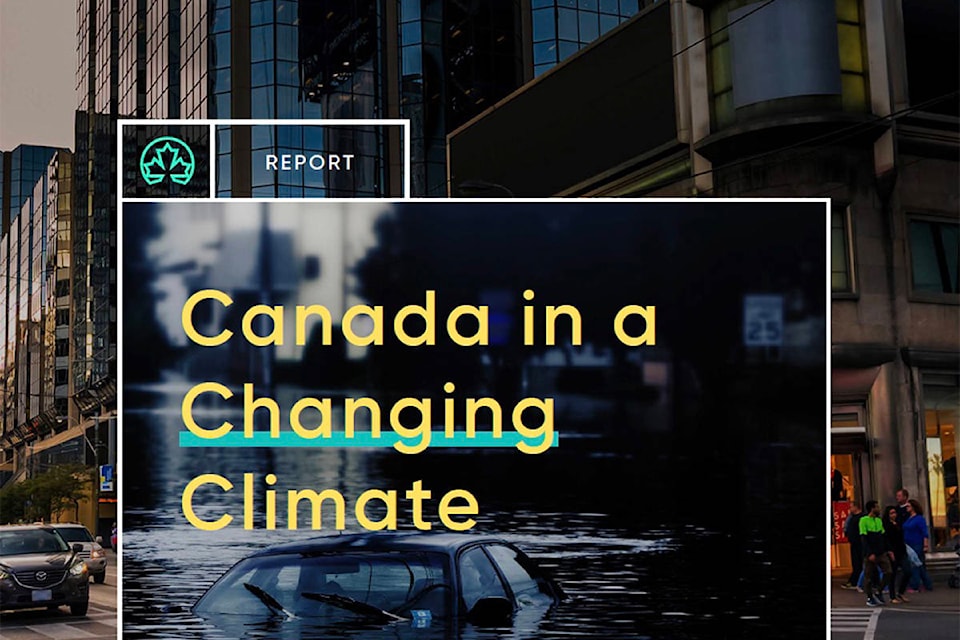Yukon’s a complicated place, and that complexity may inhibit disaster response and climate change preparedness, according to Christopher Alcantara, professor of political science at the University of Western Ontario.
“The governance structure in Yukon is rich, but it is also difficult sometimes to respond effectively and quickly to fast moving issues, like COVID, and flooding and fires,” Alcantara said.
His words parallel cautionary statements contained in a recently released national report.
The 734-page Canada in a Changing Climate: National Issues report was released on June 28 and provides a national perspective on how climate change is impacting our communities, environment and economy. The report contains relevant considerations for the Yukon, where climate change impacts seem at-hand.
Catherine McKenna, minister of Infrastructure and Communities, explained that the effects will vary across the country.
“Climate change is having profound impacts on communities of all sizes, with floods, forest fires, drought and thawing permafrost becoming more frequent, and these impacts are felt disproportionately,” McKenna said.
These disproportionate community impacts are addressed in Chapter 3 of the report where it flags several areas of concern for government response to climate change in rural areas — problems of jurisdiction, communication, and local capacity.
None of these problems are news in the Yukon.
As Alcantara explains, “Yukon is a complicated place, because it’s a territorial government, it has a federal presence, and a range of local and municipal governments with different powers and jurisdictions. And then you have the various types of Indigenous governments, including self-governing ones under the modern treaty, self-governing framework.”
All these governments make for a challenging mix — “governments with differing jurisdictions with differing resources and different infrastructure to tackle these various issues, and that can make things complex.”
The findings in the National Issues report parallel those found in the Association of Yukon Communities’ (AYC) Report on COVID-19: Crisis Management Debrief compiled in August 2020.
Both reports talk about the risks and challenges of complex jurisdictions, understaffing and under-resourced communication systems, and how difficulties in coordination can waste valuable time and rare volunteer capacity.
For example, the debrief explains how the Yukon government’s numerous departments and mandates caused great confusion at the community level. The issue was “exacerbated by a lack of understanding of whose authority it was to institute communication or emergency measures.”
The report acknowledged how “communication, engagement and collaboration with municipalities and First Nations are primary tenants of practice during crisis management,” but that the Government of Yukon appeared to make decisions in the absence of working together, without inclusion and engagement of the communities.
“This was demoralizing and disempowering to local resources,” the report says.
The AYC report will provide insight for the drafters of the new Civil Emergency Measures Act, with the Yukon’s recent experience in mind.
Emergencies are not easy.
“They present difficult problems that are hard to solve,” said Alcantara, and “a top-down approach may not work best.”
Alcantara has written five books and over 40 journal articles, focusing on institutional design and political behaviour. He is co-author of the recently released Nested Federalism and Inuit Governance in the Canadian Arctic with Gary N. Wilson and Thierry Rodon.
As a northern researcher, Alcantara recommends looking for “multi-level governance solutions.”
He explains that the top-down federal and territorial systems work for most things, but emergencies require a “horizontal” governance relationship.
“So, instead of having vertical, top-down and inflexible structures, wicked problems [like Yukon’s complex governance models in the face of climate change] require bringing together a variety of actors,” Alcantara said.
That might include federal, territorial, Indigenous and non-profit powers working together with local experts, including knowledge keepers.
These kinds of horizontal structures can address two further cautions outlined in the National Issues report: the challenge of collaborating with “top-down, inflexible” senior government structures; and senior governments over-delegating to overstretched local institutions.
Alcantara says that “research has found that these kinds of horizontal structures or equal, non-hierarchical governance structures can come up with solutions to these very difficult problems” that might be otherwise missed.
This winter, Yukon will be in a unique position to reflect, assess, and make adjustments on many levels — legislation, systems, structures and processes — to prevent and improve disaster and climate change impacts, and responses.
Contact Lawrie Crawford at lawrie.crawford@yukon-news.com
